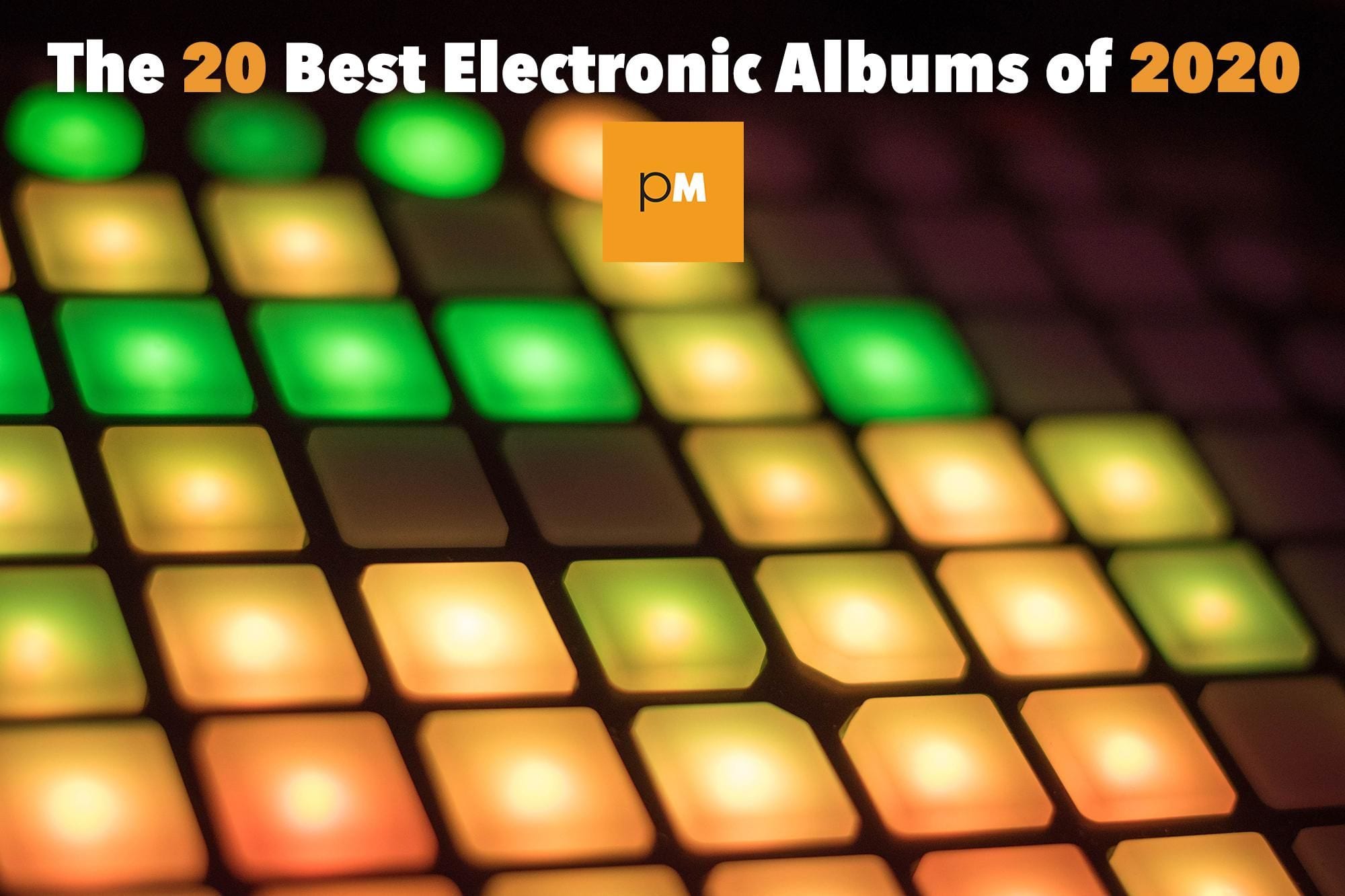20. Lee Jones – Down Into Light [Independent]

If One Grain saw Jones tinkering with a more subdued approach, Down Into Light takes things a step further. This new LP, his first full-length since Electronic Frank, is lighter, more buoyant, and more refined than anything in his catalogue. It’s beat-driven, most of the time, but not exactly danceable. The grooves here are slow, meticulous, and more for drifting off to than stomping your feet to. The songs are minimalist, but they’re anything but simple; on the surface, they may appear simple, but it’s the little things going on under the surface—distant static-crackle, muted bass drums, an occasional brass section—that make all the difference.
Nowhere is this attention to detail more evident than on “Sundance”, the fourth track. It’s quite possibly the finest in Lee Jones’ whole discography. On the surface, the song is driven by shakers, a classic house beat, and a relatively simple piano melody. In the background, however, rich, fat synths hover in and out of earshot, and a gorgeous clarinet pops in here and there, often lingering on the same note for long stretches of time. These features add both depth and dexterity. They make the track feel warmer, more intimate, but also more limber and playful. — Parker Desautell
19. TENGGER – Nomad [Beyond Beyond Is Beyond]

The title Nomad may be a little too on the nose. The South Korean/Japanese couple that makes up the core members of TENGGER — Itta on vocals and harmonium and Marqido on synthesizers — take their musical cues from annual pilgrimages to exotic locales, translating their observations into lush, unique soundscapes. It’s part electronic and part environmental, new age without all the desultory navel-gazing that goes along with that term, and wholly intoxicating. Combining synthetic sounds with those reminiscent of nature can be a tough trick to pull off convincingly. Fortunately, this is an area TENGGER knows all too well, and as a result, there are few if any missteps throughout the album’s 36-minute run time.
Bliss is all over Nomad. The ten-minute closer “Flow” begins with the sound of lush chords chugging away as vocals come in and out and float over the layers of synths. The omnipresent flow of water makes another appearance. Ever so slowly, sounds build upon sounds, but it never seems overbearing. It’s swaddling, enveloping. Nomad is music to get lost within. — Chris Ingalls
18. Die Wilde Jagd – Haut [Bureau B]

To enter the mind of German electronic musician, Sebastian Lee Philipp is to venture into a lush techno-jungle, a dark space pulsing and throbbing with life. Nowhere is this more in evidence than Haut, the third album from Philipp’s project Die Wilde Jagd. Sparse rhythms bloom into complex worlds of sound, a cacophony of creatively adapted noise and samples which assume a harmonious, rhythmic consistency merging the natural with the electronic.
The impenetrable, leafy undergrowth of this aural jungle hums with cleansing winds and buzzing cicadas. Tymbal organs and wing flicks sing to the beats, clicks, and scratches of a deeply rooted, naturalistic techno. Life here accords with harmony all of its own, and the attentive listener inevitably finds themselves in sync with this world of lush soundscapes. Haut is a concept album; a soundscape best listened to in its entirety, allowing songs to merge into each other. — Rhea Rollmann
17. Squarepusher – Be Up a Hello [Warp]

Tom Jenkinson consistently released albums under the Squarepusher moniker throughout the 2000s and 2010s, and much of it is very good and builds naturally on the stylistic signatures of his 1990s output. It’s unfair to deem Be Up a Hello a return to form, since Squarepusher’s M.O. is a sound in constant flux (see: Hello Everything). In many ways, this is a throwback record sure to be enjoyed by deep-2000s techno purists, with gnarled four-to-the-floor crankers like “Nervelevers” and “Terminal Slam” deserving strobe-blasted warehouses and cheeky-but-glowing write-ups in Muzik.
Album highlight “Vortrack” is a ghostly breakbeat barrage crammed with hi-hats and dripping slippery acid squelch. Nightmarish synths reverberate within the maelstrom, offsetting gut-hook percussion stabs with puffs and billows of minor-key distress. The uninitiated may only hear chaos. Whereas electronic heads will discern a technically remarkable sound designer upending cities and regurgitating the architecture into jagged shards of stylized wreckage.
A perpetual experimentalist, Jenkinson consistently delivers electronic albums jam-packed with ideas and vibrant tone color, of which Be Up a Hello slots in as yet another example of the creative colossus that is Squarepusher. This record feels especially important, though, because it asserts that what some would consider an outmoded sound palette can still be mined for fresh ideas, that IDM in its golden-age variety has yet to reach its zenith. — Kyle Cochrun
16. Pantha Du Prince – Conference of Trees [Modern Recordings]

On Conference of Trees, Pantha Du Prince has taken the electronic elements of his sound and rooted them in nature. It’s a bold project that benefits from the creator’s focused vision as he invites the listener to piece together imagined conversations between trees. It encourages us to engage with our own experiences and memories as well as further our appreciation of forests and woodlands. It also serves as a stark warning that our forests need to be protected at all costs. When we destroy a forest, we are not felling individual trees; we are forcibly dismantling whole communities.
Lead single “Plus in Tacet” immediately transports the listener into the heart of the forest. As xylophone and gliding strings entwine with a throbbing beat, it evokes the awe-inspiring majesty of nature. Album closer, “Lichtung” (meaning glade or clearing in English), is a meditative, expansive piece. Pantha Du Prince uses the natural ebb and flow of the organic instrumentation to amplify the silence. — Paul Carr

